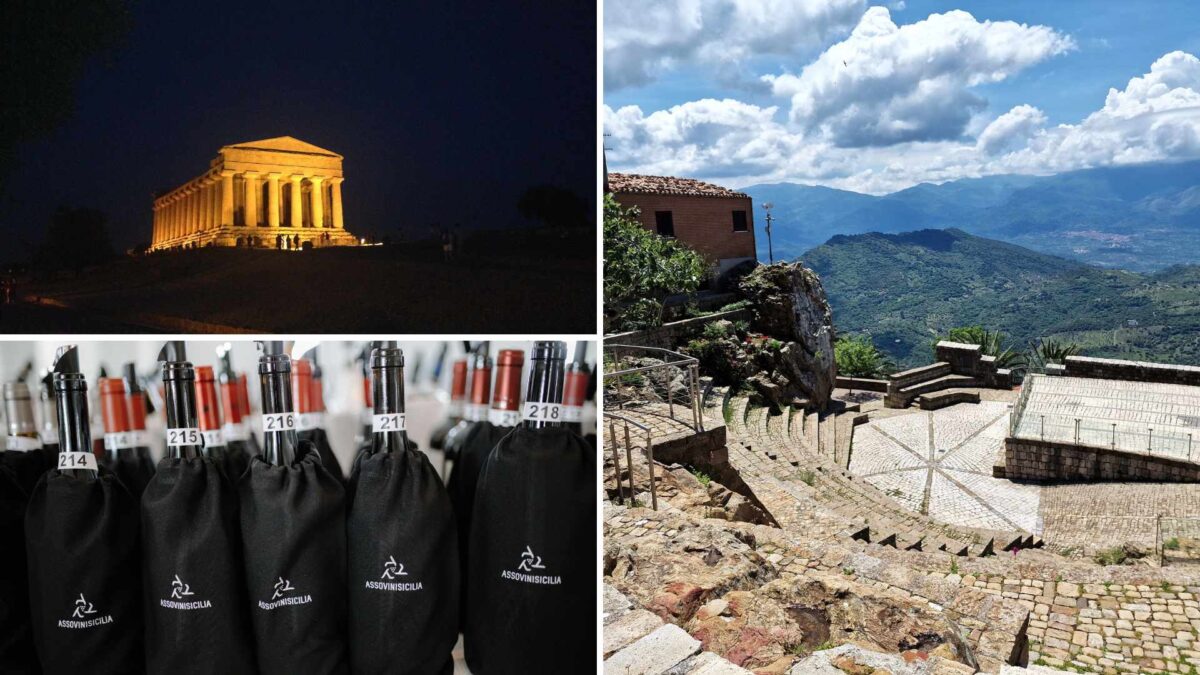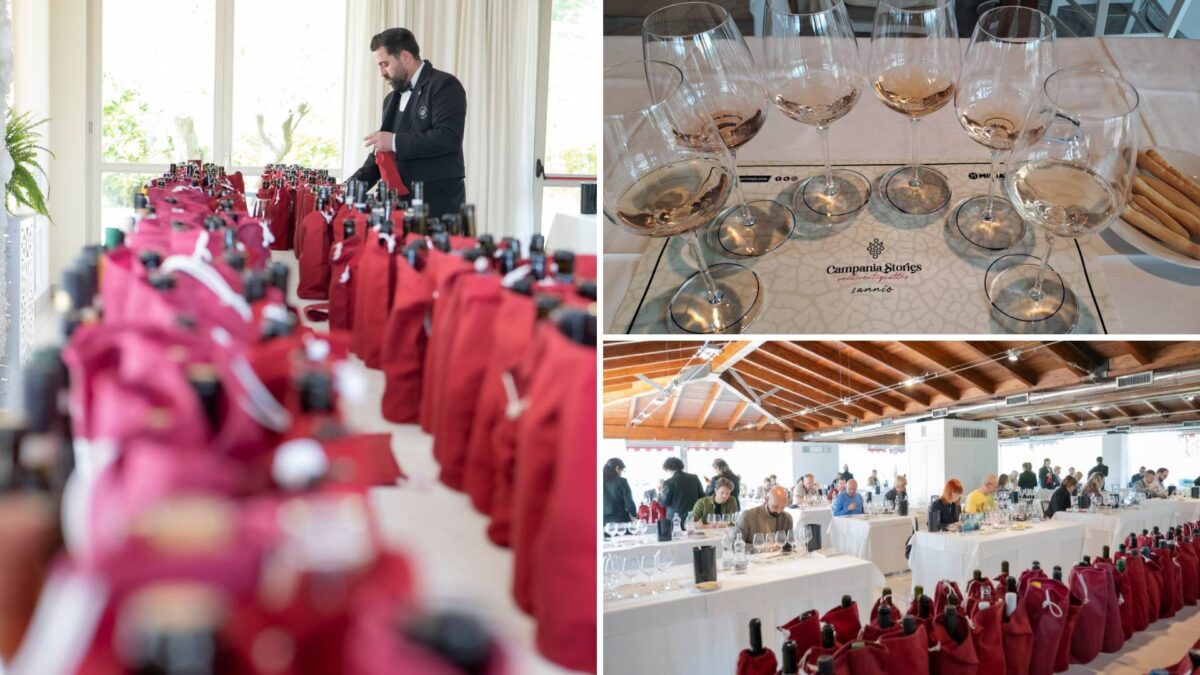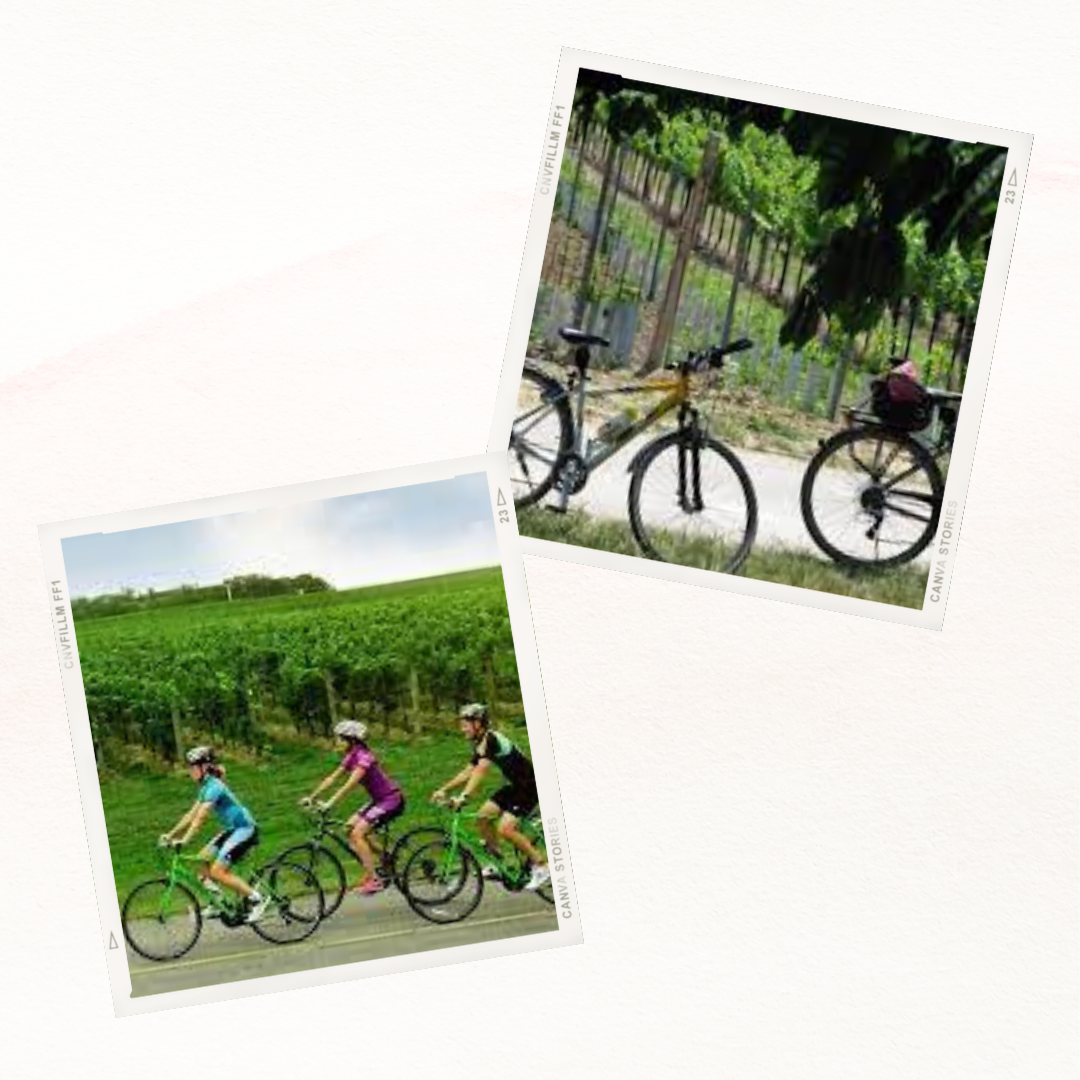The second edition of Montefalco was held on June 12th and 13th in the beautiful medieval village of Montefalco, Umbria. Anteprima Sagrantino was relaunched in 2023 to celebrate the current vintage release of Montefalco Sagrantino DOCG and the wines produced in the area. This year, alongside the 2020 release Montefalco Bianco DOC, Montefalco Grechetto DOC, Spoleto Trebbiano Spoletino DOC, Spoleto Trebbiano Spoletino Superiore DOC, Montefalco Rosso DOC, and Montefalco Rosso Riserva DOC were included in the tasting room.
Montefalco, the “Balcony of Umbria”
Montefalco, often referred to as the “Balcony of Umbria,” is renowned not just for its picturesque landscapes but also for its exceptional vineyard terroir. Nestled in the heart of Umbria, this charming medieval town is surrounded by rolling hills that provide stunning panoramic views and ideal conditions for viticulture.
The unique terroir of Montefalco is characterized by a combination of clay-limestone soils, which offer excellent drainage and contribute to the complexity and richness of the grapes. The region’s mild climate, with its warm days and cool nights, ensures a slow and balanced ripening process, enhancing the concentration of flavors in the grapes.
The vineyards benefit from optimal sun exposure, thanks to the gentle slopes of the hills, which also protect them from harsh weather conditions. This perfect balance of soil, climate, and topography creates a distinctive environment that shapes the character and quality of Montefalco’s wines.

Sagrantino and the other native grapes of Montefalco
Sagrantino
Sagrantino is the hallmark grape of Montefalco. This indigenous variety is known for its thick skin, which gives the wine a deep color and high tannin content. Sagrantino wines are robust, with intense flavors of dark fruit, spices, and earthy notes. The grape’s natural tannins and acidity allow for long aging, resulting in complex and structured wines.
Sangiovese
Sangiovese is another significant grape in Montefalco. It is often blended with Sagrantino and other varieties to create Montefalco Rosso. Sangiovese brings bright acidity, red fruit flavors, and subtle spice, making the wines approachable yet complex. This grape thrives in Montefalco’s terroir, producing wines that are both vibrant and well-balanced.
Trebbiano Spoletino
Trebbiano Spoletino is a notable white grape variety in Montefalco. Known for its fresh and vibrant character, this grape produces wines with citrus, floral, and herbal notes. Trebbiano Spoletino’s crisp acidity and refreshing profile make it a favorite for white wine enthusiasts.
Grechetto
Grechetto is another important white grape grown in the region. It is valued for its full body, rich texture, and flavors of stone fruits, almonds, and minerality. Grechetto wines are often blended with Trebbiano Spoletino to add complexity and depth.
The Cradle of Wine Tourism in Umbria
Wine Tourism in Montefalco
Montefalco is a top destination for wine enthusiasts, providing a unique opportunity to explore vineyards, wineries, and the winemaking process. The region’s picturesque hills, dotted with vineyards and olive groves, create a serene backdrop for wine tours and tastings. Visitors can immerse themselves in the local culture, learning about traditional and modern winemaking techniques directly from passionate producers.
The Strada del Sagrantino
The Strada del Sagrantino is a well-established wine route that weaves through the Montefalco region, highlighting its premier wineries and vineyards. This scenic route offers a comprehensive wine tourism experience, featuring:
Vineyard Tours
Travelers can visit some of the most renowned vineyards in Montefalco, where they can walk through the rows of vines, learn about the unique terroir, and understand the meticulous care that goes into cultivating the grapes.
Wine Tastings
Along the Strada del Sagrantino, visitors have the opportunity to taste a variety of wines, including the celebrated Sagrantino di Montefalco and Montefalco Rosso. These tastings often include guided sessions with winemakers, providing insights into the characteristics and production methods of each wine.
Culinary Experiences
The Strada del Sagrantino also emphasizes the connection between wine and local cuisine. Many wineries feature on-site restaurants or partner with nearby eateries to offer food and wine pairings, showcasing Umbrian culinary delights that complement the region’s wines.
Montefalco 2020 Vintage report
Vineyard Conditions:
The 2020 vintage in Montefalco was marked by a dynamic climate. A mild and dry winter gave way to an early spring with above-average temperatures. However, an unexpected cold snap brought snow, frost, and hail to some areas. Persistent, heavy rainfall in May and June provided an excellent water supply, helping the vines endure the extreme summer heat, especially in July. The end of August saw a shift to cooler and more humid conditions, resulting in a relatively late harvest. By the end of September, the dry climate yielded healthy, perfectly ripe, and well-balanced grapes.
Cellar Results:
The balanced and gradual harvest of 2020, particularly for later-ripening varieties such as Sagrantino and Trebbiano Spoletino, allowed for the highest quality grapes to be brought into the cellar. Despite some areas being affected by spring frosts and hail, the overall quantity of the harvest was notable. The resulting wines from this vintage are exceptional, showcasing perfected pulp maturity, vibrant and dynamic profiles, and impeccably mature tannins. The wines are not only appealing now but also have strong potential for long-term aging, making the 2020 vintage a standout year.
Exploring the Vineyards and Wineries of Montefalco
Scacciadiavoli
A landmark estate in Montefalco, Scacciadiavoli has been producing wine since 1884 and was bought by the Pambuffetti family in 1954. Scacciadiavoli means “to cast out the devils,” and is taken from a local 19th century exorcist who was known to use wine while performing his rituals. Today, the winery is a state-of-the-art 4-level facility allowing for gravity flow throughout the entire production. A visit to the winery will include a guided tour and a selection of tastings to choose from paired with Pambufetti family products or even lunch.
Pardi
The three Pardi brothers, Alfredo, Francesco, and Alberto started making wine in 1919 at the local hospital in Montefalco. Eventually their wines were shipped all over Italy, including the Vatican. Today their great-grandsons Gianluca Rio and Alberto Mario keep the family tradition alive. With 11 hectares of vines, they grow the local varieties Sagrantino, Sangiovese, Grechetto and Trebbiano Spoletino, but also international grapes like Merlot, Cabernet and Chardonnay.
Le Cimate
Le Cimate winery represents the culmination of over 200 years of agricultural dedication by the Bartolini family. Beginning with farming in the 1800s, transitioning to viticulture in the 1960s, and strategically purchasing land in 1992, the family finally began building their winery in 2011. Located at 400 meters and nestled against the Martani Mountains, the winery benefits from an excellent diurnal temperature shift and regular winds that keep the vines healthy. Surrounding their 23 hectares of vineyards are 33 hectares of olive groves and 15 hectares of hazelnut orchards. Utilizing the latest technology, the winery produces wines from an impressive array of grapes, including native varieties and international favorites such as Chardonnay, Viognier, Vermentino, Merlot, and Cabernet Sauvignon.
Tabarrini
Giampalo Tabarrini, the fourth generation of his family, took control of their agricultural estate in the late 1990s and transformed it into the winery it is today. His vision is focused on terroir, with three bottlings selected from distinct vineyard parcels to highlight their unique expressions. In addition to 15 hectares of vineyards, the estate includes olive groves and wheat fields, from which they produce their own stone-ground flour, perfect for making pizza, pasta, and desserts.
Lungarotti
Founded in the 1960s by Giorgio Lungarotti, the family estate is located in Montefalco and Torgiano, just 30 minutes northwest of Montefalco towards Perugia. The winery is a family affair, now run by Giorgio’s two daughters, Chiara and Teresa. Their mother, Maria Grazia, was a pioneer in wine tourism, creating the region’s first wine museum in the 1970s and, more recently, an olive and olive oil museum. Teresa was one of Italy’s first female oenologists, and her children, Francesco and Gemma, manage the estate’s sales and events. All their wines have been organic since 2010.
Arnaldo Caprai
Founded in 1971 by Arnaldo Caprai, a textile entrepreneur, the winery was passed to his son Marco in 1988 when Marco was only 21. Marco has expanded the estate from just 12 acres to a thriving 370-acre vineyard. Early on, he chose to drastically reduce the quantity of grapes to focus on quality. Believing in Sagrantino’s full potential, he began exporting dry Montefalco Sagrantino to the U.S. even before it achieved DOCG status, paving the way for an international revival of Sagrantino. The state-of-the-art winery in Montefalco offers multiple tours and tastings on its panoramic terrace or in the vineyards.
Antonelli
Originally owned by the Bishop of Spoleto for over 600 years, the property was bought by Francesco Antonelli in 1883. Today, the Antonelli estate spans 430 acres in the heart of the Montefalco territory. The variety of terrain, from rich clay deposits to rocky limestone, results in several microclimates, with each plot expressing its own nuances. The cellars are completely underground, allowing for the use of gravity flow during production. The grapes, mostly Sagrantino and Sangiovese for reds and Grechetto and Trebbiano Spoletino for whites, are all organic. Visitors are welcomed in the beautifully restored antique farmhouse, Casale Satriano, which includes six apartments and a swimming pool.
Romanelli
Originally owned by the Bishop of Spoleto for over 600 years, the property was bought by Francesco Antonelli in 1883. Today, the Antonelli estate spans 430 acres in the heart of the Montefalco territory. The variety of terrain, from rich clay deposits to rocky limestone, results in several microclimates, with each plot expressing its own nuances. The cellars are completely underground, allowing for the use of gravity flow during production. The grapes—mostly Sagrantino and Sangiovese for reds and Grechetto and Trebbiano Spoletino for whites—are all organic. Visitors are welcomed in the beautifully restored antique farmhouse, Casale Satriano, which includes six apartments and a swimming pool.
Tenuta Bellafonte
Located just outside Bevagna, Tenuta Bellafonte was started by Peter Heilbron, a successful businessman from Milan who fell in love with Umbria and the unique terroir of Montefalco. The winery is dedicated to sustainability and biodiversity, using solar panels and a biomass boiler to minimize environmental impact. Both the wine production facility and cellar are underground, blending seamlessly with the landscape. The vineyards are surrounded by forests and a massive olive grove with 2,500 trees, which are used to produce their own olive oil. They grow Sagrantino, Sangiovese, and Trebbiano Spoletino grapes. A large country estate was built to welcome visitors, offering seven charming bedrooms, a lush garden, and an indoor pool.
Cantina Tudernum
Established in 1958 by a group of vineyard owners who decided to join forces to market their wines as a cooperative, they grew from only a few hectares of vines to the 400 hectares they have today. Since the 1990s, they have invested in quality and technological improvements to produce an impressive variety of wines in both modern and classic styles, including rare native varieties.






